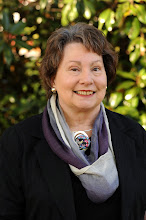July Events and Book Signings
Hello Friends,
During the weekend of July 9-10, I want to invite you to Historic Brattonsville. My second book, Fearless Martha, A Daughter of the American Revolution, is going to make its debut during this yearly festival. My husband John, the illustrator for both my books, and I will be there from 10:00 - 4:00 on both Saturday and Sunday for a book signing.
Here is the information about the event from their web site.
Battle reenactment at 2 p.m.
See how soldiers and civilians survived the Revolutionary War in the Carolina backcountry. Historic music performances, firearms demonstrations, talks by noted experts, and camp life will be shown throughout the day. Younger visitors can explore the Children’s Encampment area and experience historic toys and games, take part in military drills and explore a Revolutionary War camp.
Cost $8 adult; $6 senior; $4 youth ages 4-17. Children 3 and younger, free. CHM member discount, $2.
10 a.m.-4 p.m. Saturday, July 9
10 a.m.-3 p.m. Sunday, July 10
As you can see, it will be a lot of fun, and there will be something for all ages to enjoy. I look forward to seeing you there!
........................................................................................................................................................................
John and I will be in the Lowcountry in the middle of the month. On Friday, July 22, I have been invited by the Mt. Pleasant Barnes and Noble to participate in their monthly American Girl program. We are going to wear our colonial costumes and look forward to showing you what a mother might wear to church and what a traveling artist might wear during the Revolutionary War.
Here is the information from their web site.
American Girl with Visiting Author
Children's Event
We are very pleased to have Sheila Ingle join us for our American Girl Event. She is the author of the award-winning Courageous Kate, A Daughter of the American Revolution. Her new book is called Fearless Kate, A Daughter of the American Revolution
We are very pleased to have Sheila Ingle join us for our American Girl Event. She is the author of the award-winning Courageous Kate, A Daughter of the American Revolution. Her new book is called Fearless Kate, A Daughter of the American Revolution
Friday July 22, 2011 7:00
Towne CentreMt. Pleasant Towne Centre, 1716 Towne Centre Way, Mt. Pleasant, SC 29464, 843-216-9756
Towne CentreMt. Pleasant Towne Centre, 1716 Towne Centre Way, Mt. Pleasant, SC 29464, 843-216-9756
........................................................................................................................................................................
On Saturday, July 23, from 2:00 to 4:00, the Barnes and Noble at Northwoods has invited me for a book signing on that afternoon. Here is their address and information.
Northwoods
Northwoods Marketplace
7620 Rivers Ave
Charleston, SC 29406
843-572-2322
7620 Rivers Ave
Charleston, SC 29406
843-572-2322
Again John and I will wear our Colonial attire, and we will be glad to answer questions you might have about South Carolina and the way people lived during the Revolution.
As you can tell, you will want to be at one of these first events, so you can purchase your copy of Fearless Martha and Courageous Kate, two South Carolina heroines who stood their ground against the British and Tories during the Revolutionary War. You will enjoy both their stories!
"If we mean to have heroes, statesmen and philosophers, we should have learned women."
Abigail Adams

